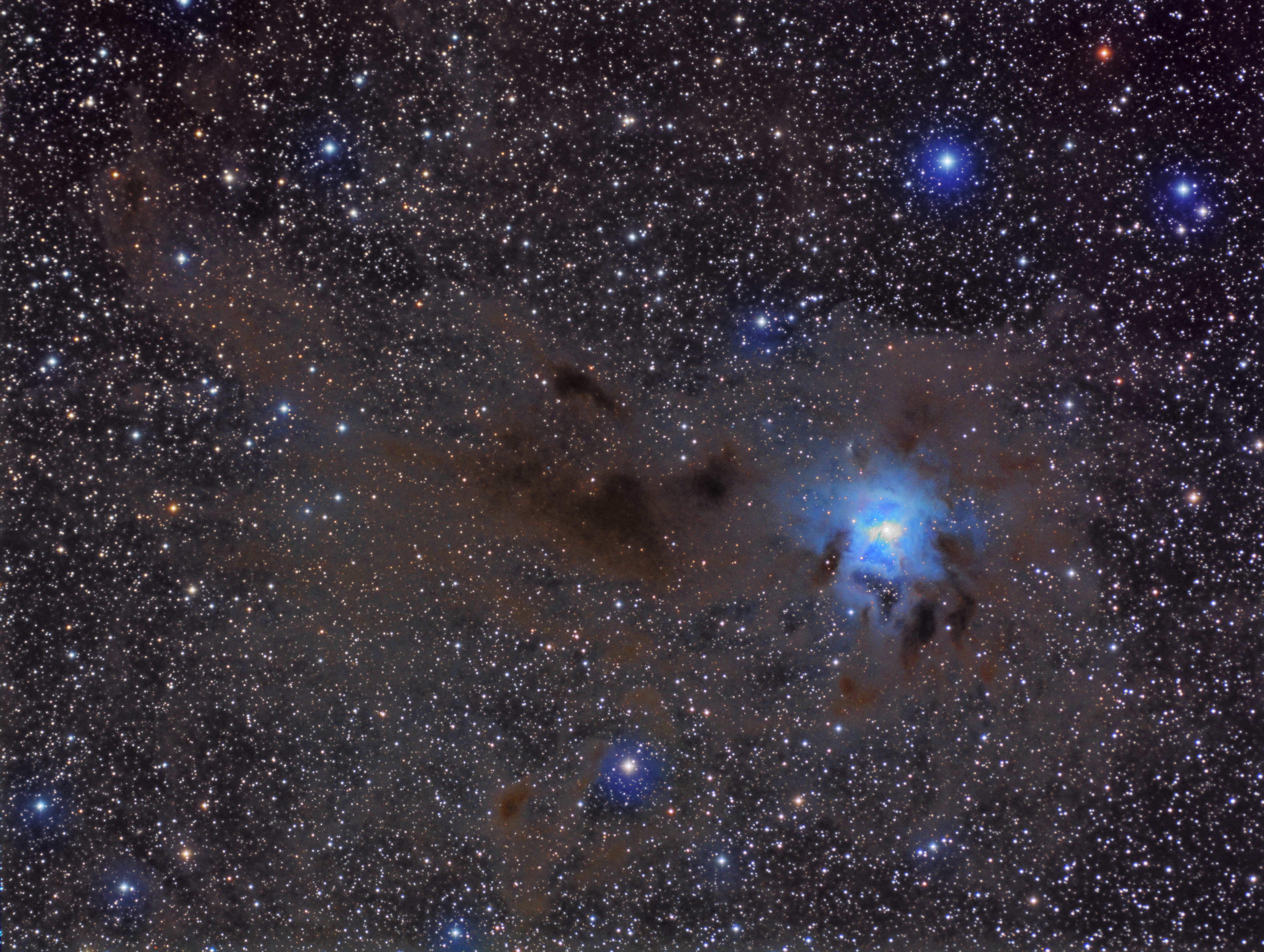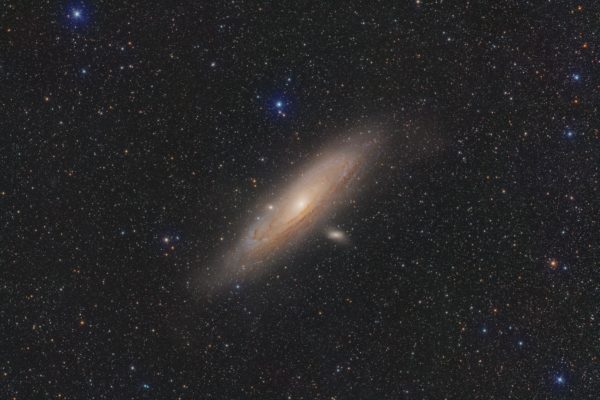The Iris Nebula, NGC 7023 – In Cepheus
The Iris Nebula, or NGC 7023, is a splendid example of an open star cluster associated with a reflection nebula. It was first observed in 1794 by William Herschel. It lies in the constellation Cepheus 420 pc (1400 light years) distant and is situated in the night sky 3.5 degrees southwest of Beta Cepheus. It is sometimes referred to as the Iris Nebula because of its resemblance to the flower of an Iris. The nebula has a visual magnitude of 7.19 and is illuminated by a magnitude 6.8 star, SAO 19158.
NGC 7023 lies in a region of the Milky Way which is darkened by dust. At its center is a very hot, young star. It radiates invisible ultraviolet light which some of the surrounding dusty cosmic filaments convert to visible red light in a process known as photo-luminesence. Interestingly, the dominant colour of the Iris Nebula is not red, but rather blue. This is characteristic of dust grains reflecting starlight. The dominant blue colour then, is evidence of dark, obscuring clouds of dust and molecular gas. The convoluted shapes of these clouds leads the eye to perceive the fantastic shape of the Iris flower. Observations done in the infrared part of the spectrum, though, have indicated the possibility that the Iris Nebula may contain complex carbon molecules known as PAHs.
Directly to the west of the Iris Nebula, in a dark region above the “petal” structure of the Iris, lies an open cluster associated with NGC 7023. It is catalogued as Collinder 427.

